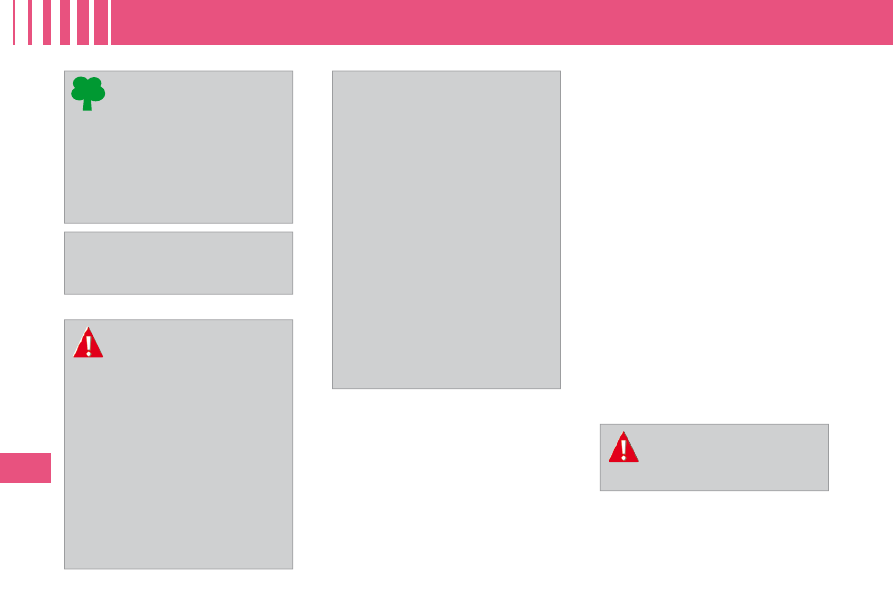Citroen C4 Picasso Dag (2009 year). Instruction - part 15

188
XI
P R A C T I C A L I N F O R M A T I O N
The batteries contain harm-
ful substances such as sul-
phuric acid and lead. They
must be disposed of in accordance
with regulations and must not, in
any circumstances, be discarded
with household waste.
Take used remote control batteries
and vehicle batteries to a special
collection point.
It is advisable to disconnect the
battery if the vehicle is to be left
unused for more than one month.
Do not disconnect the ter-
minals while the engine is
running.
Do not charge the batteries without
disconnecting the terminals fi rst.
Do not push the vehicle to start the
engine if it is fi tted with a 6-speed
electronic gearbox system.
Following reconnection of the
battery
Following reconnection of the bat-
tery, switch on the ignition and wait
1 minute before starting to permit
initialisation of the electronic sys-
tems. However, if slight diffi culties
are encountered following this oper-
ation, contact a CITROËN dealer.
Referring to the corresponding sec-
tion, you must yourself reinitialise:
- the remote control key,
- the one-touch electric windows,
- the glass panoramic roof shutter,
- the settings of the multifunction
screen,
- the audio equipment radio stations,
- the GPS satellite navigation
system.
Before disconnecting the
battery
Wait 2 minutes after switching off
the ignition before disconnecting
the battery.
Close the windows and the doors
before disconnecting the battery.
ENERGY ECONOMY MODE
System which manages the duration
of use of certain functions to con-
serve a suffi cient level of charge in
the battery.
After the engine has stopped, you
can still use functions such as the
audio and telematics system, wind-
screen wipers, dipped headlamps,
courtesy lamps, etc. for a maximum
combined duration of thirty minutes.
Switching to economy mode
Once the thirty minutes are over, a
message appears on the multi-function
screen indicating that the vehicle has
switched to economy mode and the
active functions are put on standby.
If the telephone is being used at this
time:
- it will be maintained for 10 minutes
with your Audio system hands-free
kit,
- it will be maintained for 10 min-
utes with the NaviDrive, then it
will transfer to your telephone
depending on its model.
Exiting economy mode
These functions are reactivated au-
tomatically next time the vehicle is
driven.
In order to resume the use of these
functions immediately, start the engine
and let it run for at least 5 minutes.
A fl at battery prevents the
engine from starting (refer
to the corresponding para-
graph).